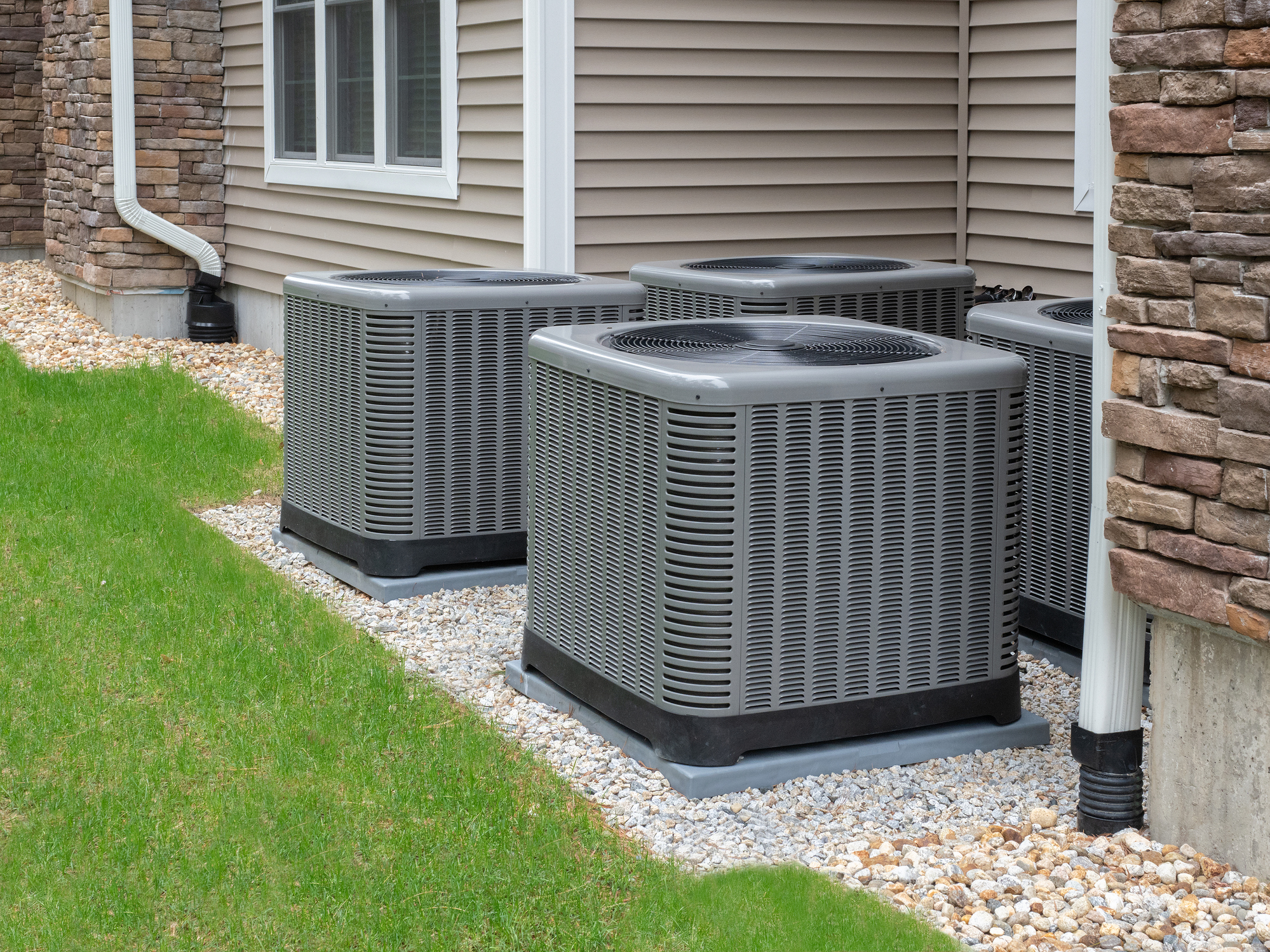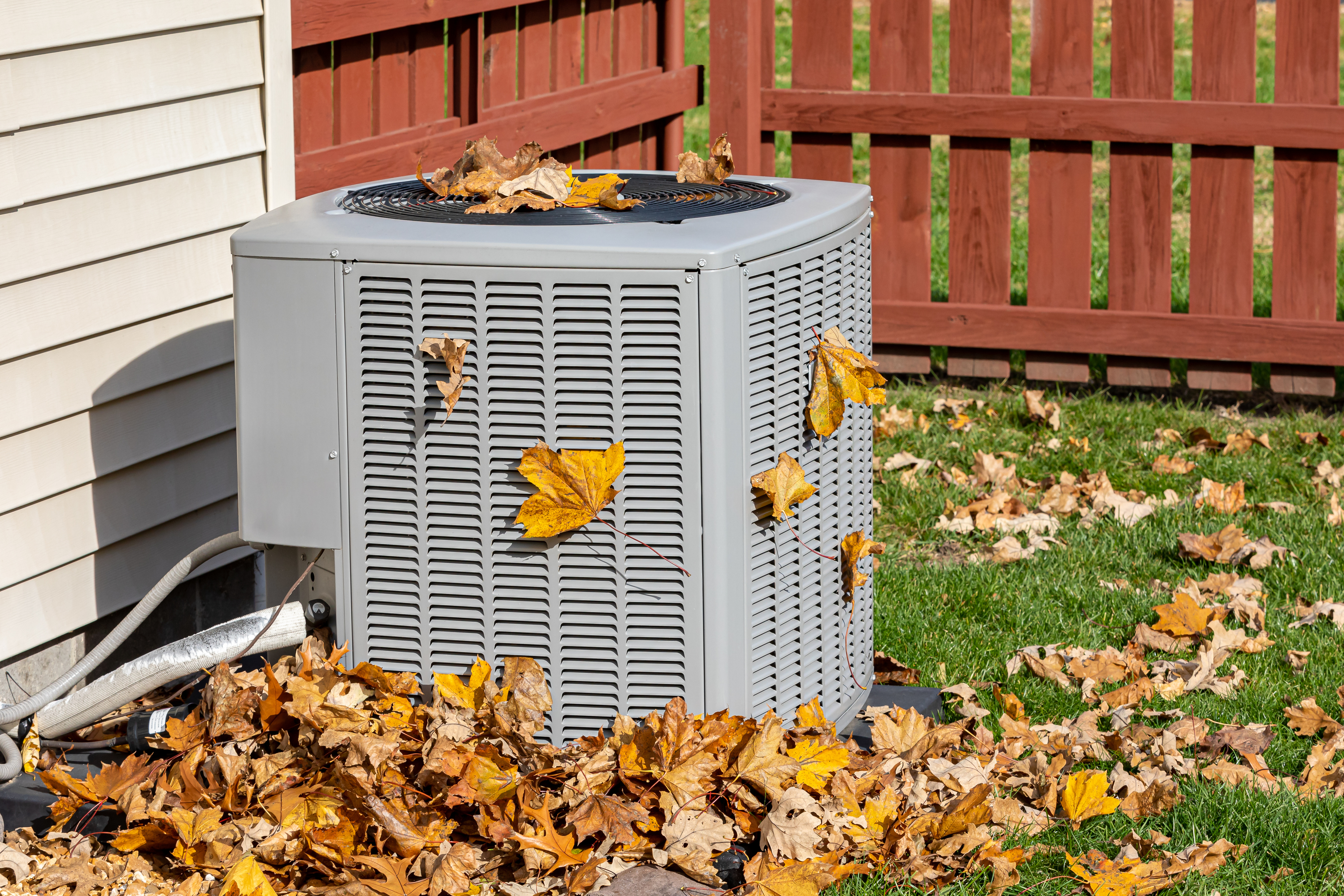How to Calculate HVAC Tonnage Needed | CraftJack
Discover how to calculate the HVAC tonnage needed to properly heat and cool a property and learn how to select the right HVAC system for your clients' needs with our handy guide.

If you're installing a new HVAC system, it's important to choose one that's correctly sized for the property. Learning how to calculate the HVAC tonnage needed for a given size of space is an essential skill for any contractor. Undersized HVAC systems may struggle to cool a room, and oversized ones have efficiency issues too. Taking the time to calculate the required tonnage is essential for customer satisfaction.
HVAC tonnage refers to the cooling capacity of an air conditioner. HVAC systems with a higher tonnage have greater cooling capacity, but that doesn't always mean a higher-rated unit is the best choice for a given property.
Are you looking to grow your business with more qualified, local HVAC leads? Get more leads with CraftJack.
A new HVAC system can be a significant investment, so it makes sense for clients to want to get the most reliable, effective, and energy-efficient system for their money. Knowing the required HVAC tonnage for a property can help with this. It ensures clients don't overpay for a system that's too large for their needs and the system they purchase won't be overworked or damaged by short cycling.
BTUs vs. Tonnage
HVAC tonnage is measured in British Thermal Units (BTUs). A BTU is equivalent to the amount of heat energy required to increase the temperature of one pound of water by 1 degree F at sea level. One ton of air conditioning can remove 12,000 BTUs of heat per hour.
The challenge for HVAC contractors is working out how many BTUs of heat you need to remove from a property. The most important factor is the size of the property. A larger property can hold more hot air and requires a greater cooling capacity than a smaller property.
HVAC companies often talk about air conditioning in terms of BTUs per square foot. People living in hot climates need more BTUs of air conditioning power per square foot than those living in colder climates.
Why Is HVAC Tonnage Important?
Knowing the tonnage of an HVAC system is useful when it comes to making decisions about the size of HVAC unit to install in a residential or commercial property. Choosing an incorrectly sized HVAC system could increase energy bills and result in inadequate cooling.
Larger HVAC units cost more to install and run and may not always be the right choice. In contrast, a smaller unit could end up running 24 hours a day and feel as ineffectual as trying to use a desk fan to cool a restaurant kitchen.
The Benefits of Calculating HVAC Tonnage
Knowing the HVAC tonnage requirement of a property can help you choose the right HVAC system. Many consumers fall into the trap of thinking "bigger is better" when it comes to HVAC, and contractors need to educate users that this isn't always the case.
It's true that an undersized HVAC system won't properly cool a house or commercial property. A small system may find itself running constantly without reducing the temperature of a room to the desired level. This can be frustrating for the homeowner because their energy bills will increase and they'll have to put up with HVAC fans running day and night without cooling their space.
An oversized system might cool the space, but it would cost more to run. In addition, a unit that's too large for the space it's supposed to be cooling may short cycle. This means it will run for a short period of time, cool the room (perhaps making it too cool), and shut off. Short cycling can damage the equipment and isn't ideal for your home. One side effect of running a properly sized air conditioner is that it circulates air and removes humidity in the process. An air conditioner that's short cycling doesn't have time to do this, leading to increased humidity in the property and a greater risk of mold and mildew problems.
How to Calculate HVAC Tonnage Needed
There are several ways to calculate HVAC tonnage, but the simplest way is to start by calculating the BTU load and use that to work out the tonnage:
- Measure the length and width of each room the AC system will serve.
- Calculate the square footage of each room by multiplying the width by the height.
- Add up the square footage of each room to get the total square footage served by the HVAC system.
- Multiply that figure by 20 to get the base BTU load requirement.
- Divide the BTU load requirement by 12 to get the tonnage.
- Given the above example, let's imagine you have a house that's 1,500 square feet in total.
- Multiplying 1,500 by 20 gives a BTU load requirement of 30,000.
- Dividing 30,000 by 12 gives a suggested tonnage of 2.5.
So, assuming a well-insulated home in an ideal environment where the HVAC works at maximum efficiency, you'd need an HVAC system with a tonnage of 2.5 to properly cool that property.
In the real world, a property that is poorly insulated or sees a lot of direct sunlight may require a more powerful air conditioning unit. One rule of thumb to work around this issue is to multiply the square footage by 25 instead of 20 to give a little extra capacity.
This basic formula is a useful starting point for providing an HVAC estimate. However, there are more accurate options, such as the Manual J formula discussed below, that should be employed before starting work.

Other Things to Consider When Choosing an Air Conditioner
Tonnage is just one of the factors to take into account when considering which air conditioner to install in a property.
Modern air conditioners often make use of new technologies for improving indoor air quality and modern refrigerants that are better for the environment and more energy-efficient. If you're considering purchasing a new air conditioner, looking for one that's ENERGY STAR rated is a good idea. ENERGY STAR rated air conditioners have a higher seasonal energy efficiency ratio (SEER) and energy efficiency ratio (EER) than conventional models and typically use around 8% less energy as a result.
One common issue with HVAC system installations is zoning. Older one-size-fits-all systems may cause issues while the AC is running, such as some rooms becoming very cold and others not being cooled enough. For example, a home with large glass doors may overheat when the sun is shining directly onto the glass, but the basement, which is more shaded, may not need the same level of cooling.
There are still many older HVAC systems installed in both residential and commercial properties. These systems may use discontinued refrigerants. When servicing these units, contractors may be asked whether it makes sense to replace them. Some older units can be retrofitted to accept newer refrigerants, extending their useful life. However, replacing the unit could offer cost savings in the long term.
Because HVAC systems have gotten far more energy-efficient and effective over the years, an older unit could be replaced with a smaller one that offers similar cooling capacity, more features, and lower running costs. Newer units may offer individual controls to allow people to manage air flow to different rooms separately and better features for timing and temperature sensing, giving them more control over the temperature in their homes throughout the day. Bulky units could be replaced with something smaller and quieter, making them more pleasant to use.
Factors That Affect HVAC Tonnage
The simple formula listed above is a good starting point for calculating HVAC tonnage. However, it doesn't consider all the things that impact how efficiently an HVAC unit works. The Manual J formula was created by the Air Conditioning Contractors of America (ACCA) in 1986, and it covers far more of the factors that impact how efficiently an HVAC system works, such as:
- The climate in the area
- Whether the property is insulated
- How shaded the property is
- Whether there are any rooms with large windows/glass doors
- The sizes of the rooms
- The building materials used in the property's construction
- The location and thickness of any walls
- How many people tend to occupy the space
- Whether any heat-generating appliances are used in the property
- The age of the property
- The type of ductwork being used
For example, someone looking for HVAC systems in Florida, which is Climate Zone 1, is likely to need a more powerful AC unit than someone who lives in a similarly sized property in Maine. If you wanted to modify the simplified formula to take into account the climate in the area, you could modify the BTU multiplier. The difference climate makes can be quite striking. A property in Climate Zone 1 could use a BTU multiplier of between 22 and 30, whereas those in Climate Zone 7 could use multiples as low as 12 BTU per square foot.
The climate zone can have a large impact on the tonnage requirements for an HVAC system, but to get an accurate estimate, it's important to take into consideration all the above points. Contractors can use the Manual J formula to work out how powerful an HVAC unit should be, as this sophisticated formula covers them all. In some cases, the Manual J formula will give similar results to the simplified formula. However, for buildings in Climate Zone 1 or those that have high occupancy levels, this formula may suggest more powerful units.
Manual J is not a perfect system. It makes assumptions about the material used in ducts and heat loss and gain that may not apply to all systems. However, it's more accurate than a one-size-fits-all formula.
It's rare to find an AC unit that exactly matches the size of the property in question and the property's suggested rating according to the Manual J calculations. If you're unable to find a unit that's an exact match, it's okay to select an oversized unit as long as it's no more than 15% above the recommended size. If you exceed the suggested tonnage by more than 15%, you're more likely to run into issues with short cycling.
Once you have a load figure from Manual J, you can use the Manual S procedure to select the right equipment based on that load figure. Finally, the Manual D procedure can be used to determine the best ductwork design for a residential property.
Accuracy Matters When It Comes to HVAC Tonnage
Knowing how to calculate the HVAC tonnage needed for a property is an essential skill for any contractor offering HVAC services. Estimating using the size of the property is a good starting point, but the Manual J system is the gold standard for accurate tonnage calculations. Learning both methods will help you serve your clients well.
Reach more potential customers in your local area. Sign up with CraftJack today for more phone-verified HVAC leads.


